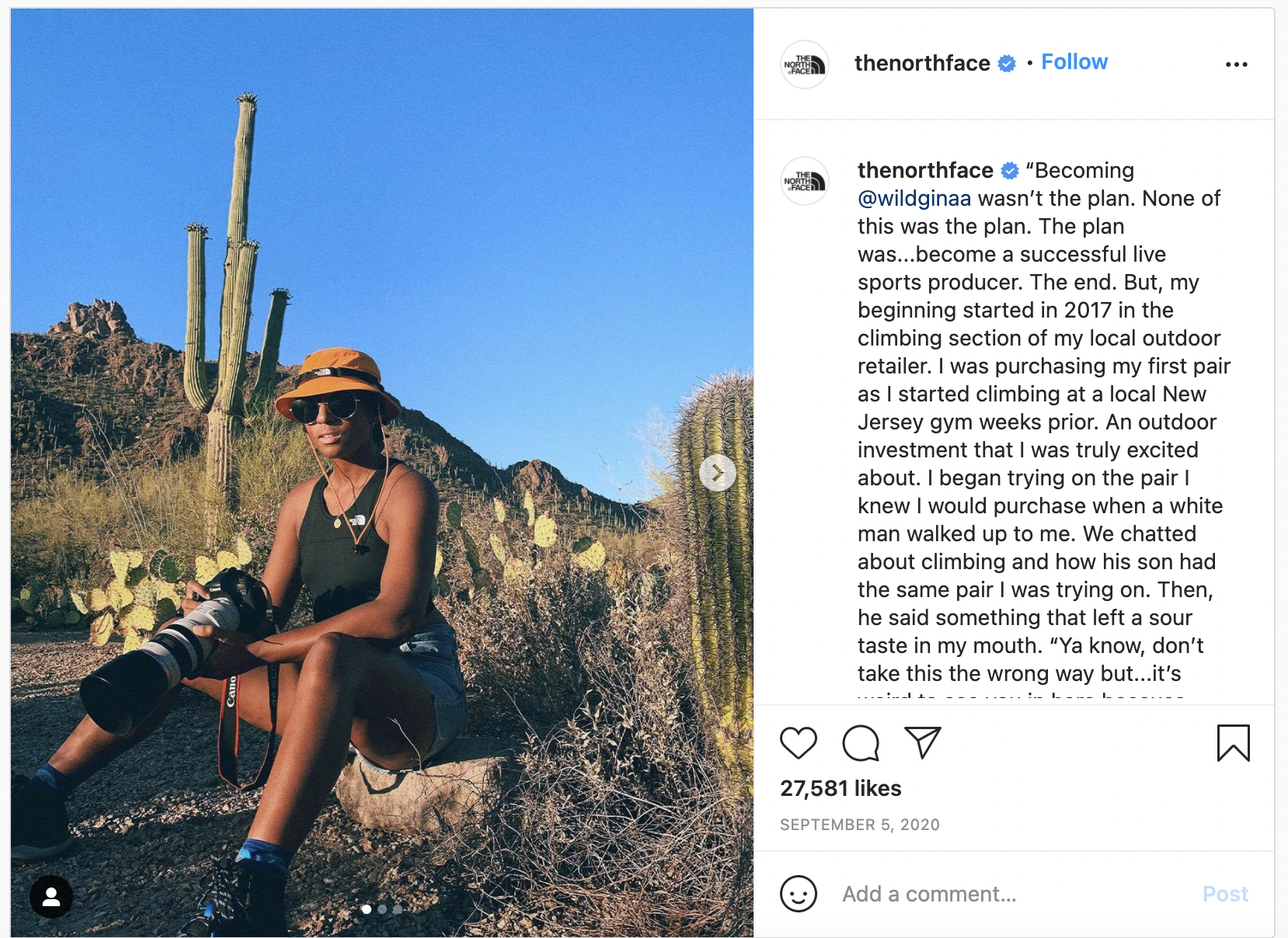The Importance of Representation and Inclusion

Only 7% of people feel represented in advertising, leaving 93% of us feeling disconnected and underrepresented by brands.
Inspired by the Facebook Insights Live event, Smashing Audience Stereotypes, I wanted to explore the importance of representation and how we, as an industry, can apply this to social media. I tried to uncover how groups or individuals are often overlooked in advertising and how brands have used their platform to amplify such voices. Given that we know the media can either perpetuate or tackle stereotypes, now is the moment to ask ourselves how we, as an industry, can ensure our social content is more representative.
While I appreciate that I will never fully understand what it’s like to be part of a racial minority background, I have found listening, reflecting, and education vital in building a framework for understanding.
The Scully Effect
I began by looking at the impact representation has by exploring the Scully Effect. The Scully Effect is a phrase coined from an online survey in 2018 by Genna Davis Institute of Gender in Media and JWT Intelligence after Gillian Anderson stepped into the role of Dana Scully in The X-Files. The Scully Effect looked at the influence the character had on those who identify as women and their perception of STEM (Science, Technology, Engineering & Mathematics).
Scully stood out in the 90s as the only female STEM character in a prominent, prime time television role. Representation through Scully found that:
- 63% of people increased their belief in the importance of STEM.
- 65% agreed that Scully increased their confidence that they could excel in a male-dominated profession.
- 53% agreed with the statement, “I would encourage my daughter to enter a STEM field.”
Anderson said in an interview, “At the time that Scully showed up [in 1993], we didn’t see that type of female represented very much at all out in the world of television, which is what we look to more and more examples of who we are and to help make sense of us as human beings.”
Representation in advertising
Advertising also plays a pivotal role in representation, but with only 7% of us feeling represented in ads, it is apparent that this space often reinforces stereotypes. Diversity, inclusion, and belonging should be the key focal point of brand communication whilst remaining authentic to the brand’s values.
Within a study of over 2,000 advertisements across the top 50 worldwide brands, women and people of colour are often represented but tend to be in stereotyped roles.
For example, whilst 94% of brands portrayed women in a primary role, only 57% were in power positions. Over half played a stereotypical gender character, such as an empathetic mother or a devoted wife.
Check then for the least represented community within the study? The LGBTQIA community. With less than 1% of ads (across only three actual ads) portraying someone of this community. This is important as representation helps tackle Queer phobia, exposing people to the LGBTQIA community in ads and other media increases acceptance levels. “When you have greater visibility of people who are LGBTQ, then you increase acceptance,” said Marc Pritchard, P&G’s chief brand officer. “It’s human nature that familiarity can lead to a greater degree of acceptance.”
Queer representation also reflects well on brands; Pritchard further discusses that companies benefit because it “shows that they see people and understand people, which creates a higher degree of trust”. However, 72% of the LGBTQIA community think that the way they are represented in advertising is tokenistic. While brands launching messaging around Pride can be seen as supportive, it becomes futile if the topic is lacking during the rest of the year, as brands are seen jumping onto a bandwagon rather than fully embodying these values.
Despite this, we still see stereotypes, tone-deafness and cultural insensitivity running throughout advertising campaigns. Due to the rise of social media, we have experienced users calling out companies with brands publicly apologising for “missing the mark”. Audiences react in real-time, meaning brands must have complete visibility on their customer’s expectations. We, as an industry, need to hold our clients accountable.
How will this help our brands?
Representation can also benefit the brand itself, with diverse ads driving 90% of participants to a higher brand recall and mixed-gender ads performing at a 28PP higher recall rate. A successful understanding and portrayal of a brand’s audience could result in higher brand preference and even lift sales. The study shows brands with representative ads achieving an average 44% stock gain.
How can we ensure our society is more representative?
1. Representation within and behind the content.
Gaining the perspective of those you are representing often helps to shape authentic content. Giving people the opportunity to create the content themselves ensures that their experiences are shared, not through the lens of detached decision-makers but from those who have lived and understand the topics raised within the messaging.
The North Face Perspectives campaign embodies this stepwell, ensuring that it uses its platform to amplify Black voices. From small business owners to outdoor enthusiasts, this series of content looked to spotlight people’s experiences within the outdoor space, perspectives that may not have been known if the campaign had not given people the opportunity to tell their story.

This year, for International Women’s Day, 1000heads also worked with Intel to launch #ChoosetoChallenge. This was prompted by the underrepresentation of women in tech, pushing content that spotlights the opportunities for those who identify as female in Intel’s workforce.
2.Listen and adapt.
Forbes discusses the value of customer intimacy. When you know your customers at a deeper level, how you know your significant other, your best friend, or a family member—you are equipped with the knowledge needed to know when something is appropriate and when it will offend. Customer intimacy also trains people to have a stronger voice and greater courage to speak up when they see a piece of marketing being produced won’t land well with their core audiences.
This level of customer intimacy highlights the importance of understanding customer needs in the here and now. Campaigns that shift and morph into what your audience would benefit from, at this moment, provides them with the tools to overcome a challenge. Therefore, supporting your audience in ways they did not realise they needed helping.

Prompted by lockdowns and pandemic restrictions, The New York Times launched the Primal Scream free phone Line for parents to vent their home-schooling and lockdown frustrations. In response to a group of New Jersey mothers gathering at a park to scream, this service provided their audience with a much-needed space to express their feelings.

We worked with Cisco to develop #FutureVoices, a campaign that championed teachers and students who have inspired others, overcoming the obstacles of remote learning and virtual classrooms. By celebrating those who are adapting and implementing creative education solutions, Cisco could represent a niche segment of their audience to ensure that educators are represented via social.
3. Examine your own bias.
Using tools to reveal language bias will help ensure all audiences feel included, particularly when creating copy for social content. Language bias has expressions that demand or exclude people because of their age, sex, race, ethnicity, social class or physical or mental traits.
On International Women’s Day, Unilever announced that they would be eliminating the word ‘normal’ from their beauty and personal care brands’ packaging and advertising. This was a direct attempt to combat beauty standards which are often harmless to people’s self-esteem and confidence. This seemingly small act of removing a word recognises that so many of the harmful gender norms unwittingly, perpetuated by brands, lies in the unconscious.
It is essential not to overlook audiences; the best way to spot unconscious bias is by challenging your actions. You could ask yourself a few questions about the decisions made, such as excluding certain people? Do we truly understand the perspective of the person we’re spotlighting, or have we made assumptions? Are we avoiding a particular topic as it is uncomfortable to discuss?
Most unconscious bias forms because we do not know better or have not experienced other cultures or minorities and haven’t been exposed to diverse people. We should continue to educate ourselves on broader issues and ensure that we are taking to a diverse range of sources into consideration to help formulate a more balanced perspective about issues.
‘Representation is vital; otherwise, the buttery surrounded by a group of moths unable to see itself will keep trying to become a moth’ – Rapi Kaur.
If you’d like to have a conversation about how we can evolve the thinking for your brand and representation within your campaigns, feel free to drop us a line at info@1000heads.com ?. We’d be happy to help you!